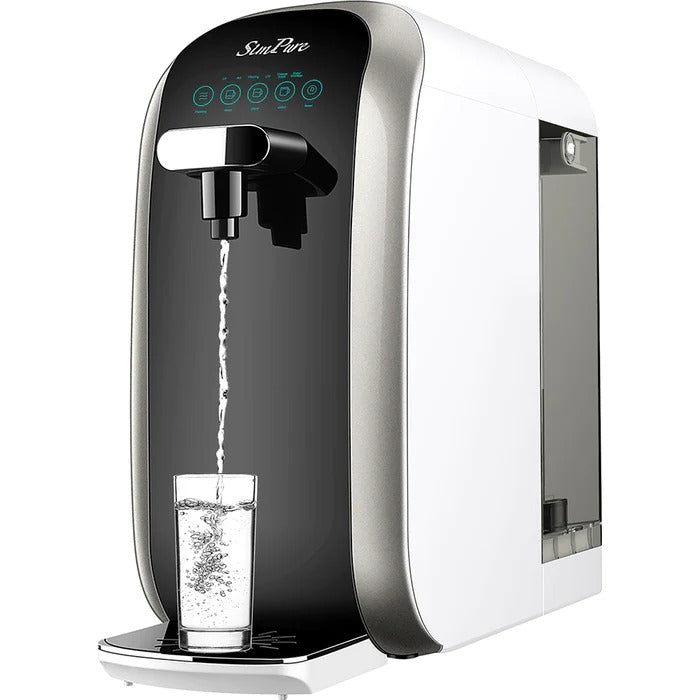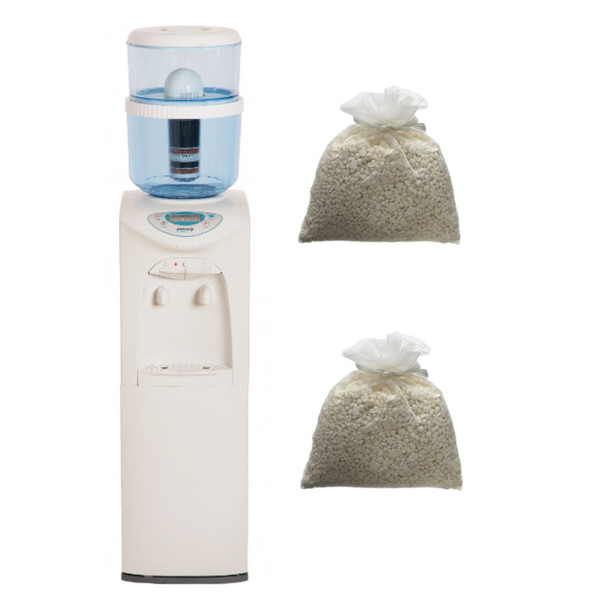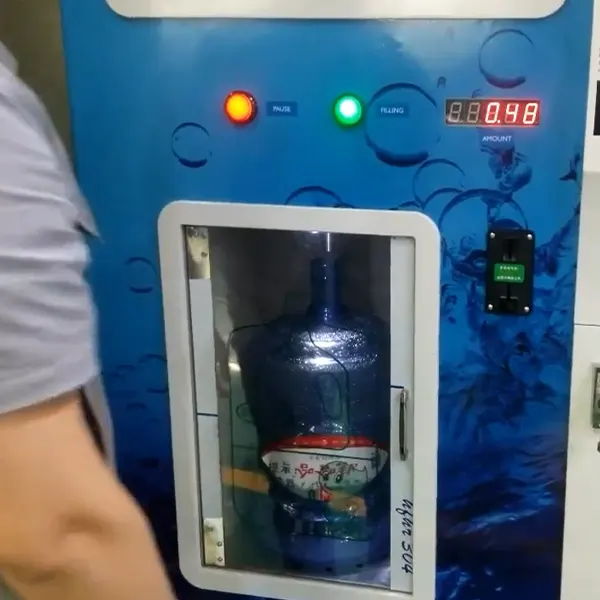Hot Water Burns Prevention
Hot water can pose a burn risk from dispensers. To reduce this, always be mindful when dispensing. Hot and cold water dispensers often include a safety switch. This switch helps to prevent accidental burns. Still, you must take care when filling cups or bottles. It’s safest to use containers with wide openings. This helps to avoid splashes that can scald skin. Also, be aware of steam that can rise from hot water. Educate family members, colleagues, and especially children, on the proper usage. Your vigilance can prevent painful injuries and ensure safe dispenser operation.
Proper Lifting Techniques for Refills
Proper lifting is crucial to avoid back injuries. Water bottles for dispensers are heavy, increasing the risk of strain. Use these techniques when refilling your water dispenser:
- Stand Close to the Water Bottle: Before lifting, stand close to the water bottle. This minimizes the need to lean over, protecting your back.
- Bend From the Knees, Not the Waist: Always bend your knees, not your waist, when picking up the bottle. This distributes weight to your legs instead of your back.
- Hold the Bottle Close to Your Body: When lifting, keep the bottle close to your torso. This lessens the load on your back muscles.
- Lift with Your Legs: Employ the strength of your legs to lift the bottle upwards. This safe practice significantly reduces the chance of back injury.
- Keep Your Back Straight: During the lift, make sure your back is straight. A curved back increases the possibility of muscle strain.
- Avoid Twisting Movements: Turning your body while holding the bottle can harm your spine. Face the dispenser before you lift the bottle.
- Get Help If Needed: Don’t hesitate to ask for assistance. Lifting a water bottle is easier and safer with two people.
Remember, adopting these proper lifting techniques not only preserves your back health but also promotes overall safety around water dispensers. After all, prevention is better than needing to seek treatment for a preventable injury.

Regular Cleaning and Sanitizing
Regular cleaning and sanitizing are key to avoiding water dispenser health risks. Dirt and germs can build up fast. Public dispensers are touched by many hands each day. This can spread germs if not cleaned properly. Make sure to clean your water dispenser often. Use a proper cleaning solution. Wipe down the exterior and the spouts. Remember to clean the drip tray too. For home dispensers, once a week should be enough. For office or public dispensers, a daily wipe-down with disinfectant is best. Keeping cleaning supplies nearby can remind people to clean regularly. Always follow the manufacturer’s cleaning instructions. This keeps the dispenser working well and safe for everyone.
Mold Detection and Removal
Mold in water dispensers can pose serious health risks. Detecting and removing mold is crucial. Check your dispenser weekly for any signs of mold. Unseen areas are especially prone to mold growth. Look for a musty smell which can indicate the presence of mold. To remove mold, clean with mild soap, water, and a sponge. Focus on hard-to-see areas where mold likes to hide. After cleaning, dry all parts completely to prevent mold from returning. For prevention, ensure the space around the dispenser is well-ventilated. This reduces moisture, which mold needs to grow. If mold is a consistent problem, consider a dispenser with a self-cleaning feature. Always follow your dispenser’s maintenance guide for specific cleaning advice. Remember, regular mold checks keep your water safe and your health protected.
Electrical Safety Measures
Proper electrical safety around water dispensers is vital. Water and electricity are a risky combination. They can lead to shock or fire hazards. Prevent these risks by adhering to these safety measures:
- Use the Top Socket: Always plug the dispenser into the top outlet socket. This minimizes the risk of water reaching the plug.
- Keep Distance from the Outlet: Position the water dispenser as far from the outlet as the cord allows. This reduces the risk of electrical accidents in case of leaks.
- Dry Hands Before Use: Ensure your hands are dry before touching the dispenser’s plug or switch. This is a simple yet effective way to prevent electric shocks.
- Regular Inspections: Check the water dispenser for any signs of damaged cords or plugs. Replace them immediately if found to prevent electrical issues.
- Safe Installation: Secure cords safely to avoid tripping or water contact. If uncertain, consult a professional to install your dispenser properly.
By following these electrical safety measures, you can keep yourself and others safe around water dispensers. Preventing accidents is always better than dealing with their consequences. Ensure everyone using the dispenser knows these safety tips.

Preventing Slippery Floors Around the Dispenser
Preventing slippery floors is crucial for safety around water dispensers. Follow these guidelines to minimize risks:
- Regularly Check for Leaks: Inspect your dispenser often for any signs of leaks that can cause wet floors.
- Use Non-Slip Mats: Place non-slip mats beneath the dispenser to absorb spills and provide traction.
- Maintain Clean Spill Trays: Empty and clean drip trays regularly to prevent overflow and pooling water.
- Promptly Clean Spills: If water spills, clean it up immediately to avoid slips and falls.
- Educate Users: Inform everyone about the risks and ensure they take care when dispensing water.
- Install Dispensers Properly: Ensure your dispenser is stable and not prone to tipping over and leaking.
By taking these steps, you can help to keep floors dry and safe and reduce water dispenser health risks.
Safe Cup and Bottle Usage
When using a water dispenser, the cups or bottles you choose are important. Ensure they are clean. This prevents the transfer of germs and bacteria. Follow these steps for safe cup and bottle usage around water dispensers:
- Always Use Clean Containers: Rinse your cups or bottles before refilling. This helps keep water pure.
- Avoid Sharing: Do not share containers. This cuts down the risk of spreading illness.
- Keep Cups Covered: Store cups or bottles upside down or covered to keep dust and debris out.
- Use a Personal Container: Having your own bottle or cup reduces cross-contamination.
- Dispose Properly: If using disposable cups, throw them away after a single use. Do not leave used cups near the dispenser.
By following these simple steps, you can maintain the health benefits of your water dispenser. A little care goes a long way to safeguard against water dispenser health risks.

Proper Handling of Dispenser Nozzles
Handling dispenser nozzles correctly is vital for health. Nozzles come into contact with many hands. This can spread germs quickly. Here are steps to reduce risks:
- Avoid Direct Touch: Touching nozzles can transfer bacteria. Use a paper towel or tissue to dispense water. This helps keep the nozzle clean.
- Teach Proper Use: Show others how to use dispensers without touching nozzles. Display signs as reminders. Education is key to prevent contamination.
- Check for Auto-Cleaning Features: Some models auto-clean their nozzles. If yours does, ensure this feature works properly. Auto-cleaning helps kill germs without manual cleaning.
- Regular Cleaning Schedule: Even with auto-cleaning, set a schedule to clean nozzles manually. Use a disinfectant. Clean daily in public spaces, and weekly at home.
- Replace Nozzles as Needed: Inspect nozzles for wear or damage. Replace them if they show signs of deterioration. A damaged nozzle can harbor more bacteria.
By following these steps, you can help reduce water dispenser health risks. Clean and well-maintained nozzles contribute to safer drinking water.
Importance of a Filtration System
Ensuring your water dispenser has a good filtration system is crucial. Unfiltered water may contain impurities like chlorine, lead, and other contaminants. These can harm your health. A filtration system cleans the water, making it safer to drink. Remember to replace filters as the manufacturer recommends. This keeps the water pure and the dispenser running smoothly. By using a filtered water dispenser, you protect yourself from health risks. Clean water is vital for a healthy home or office.

